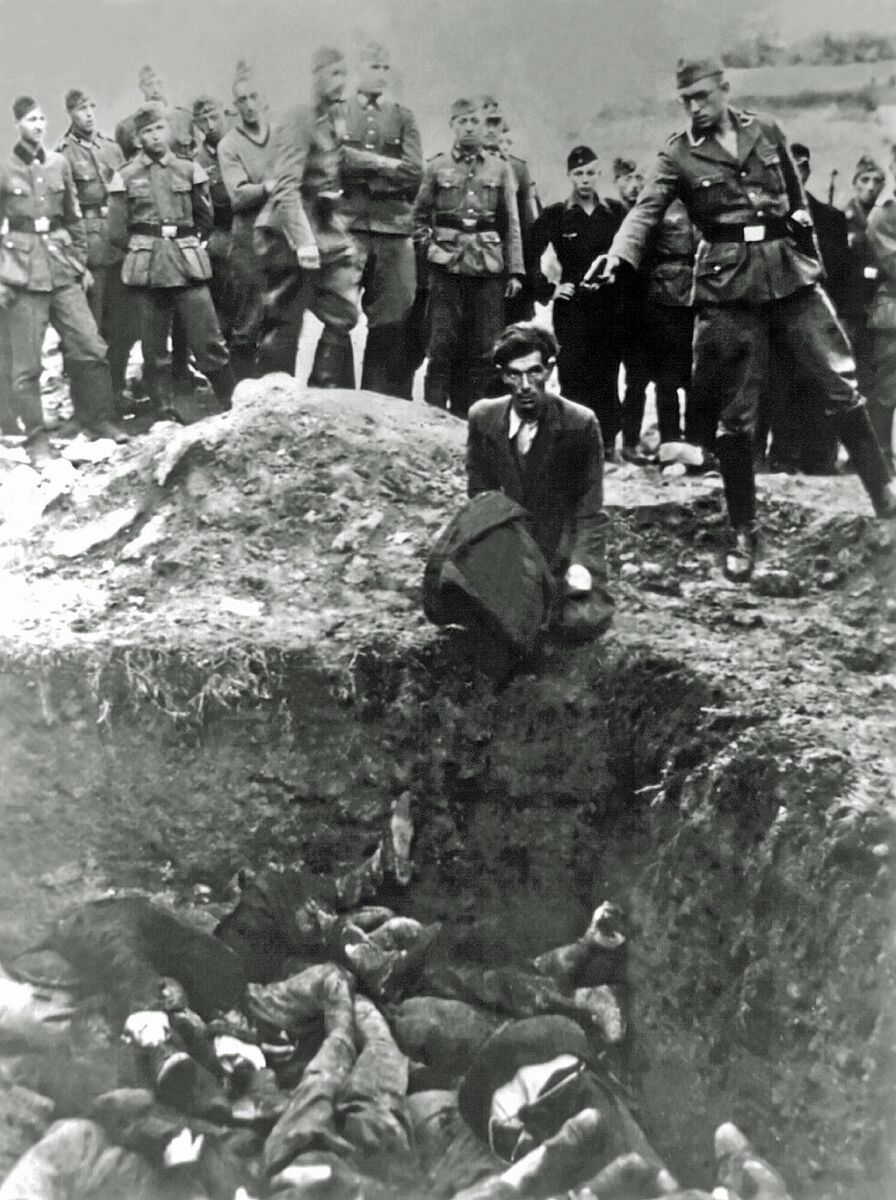AI Unmasks Nazi Killer in Infamous Holocaust Photograph
One of the most haunting images of the Holocaust captures a chilling moment: a bespectacled Nazi soldier aims a pistol at the head of a man kneeling before a pit filled with bodies, while other troops look on. For decades, this photograph, mistakenly titled "The Last Jew in Vinnitsa," was an anonymous symbol of brutality. Now, thanks to the tireless work of a historian and the power of artificial intelligence, the killer has a name.

Correcting a Painful History
German historian Jürgen Matthäus has dedicated years to unraveling the story behind the photograph. His research, published in the Zeitschrift für Geschichtswissenschaft (Journal of Historical Studies), confirms the massacre took place not in Vinnytsia, but 90km away in the citadel of Berdychiv, Ukraine, on July 28, 1941.
Berdychiv was once a vibrant center of Jewish life. The killings were carried out by the Einsatzgruppe C commando, a mobile death squad tasked with eliminating “Jews and partisans” in the newly occupied Soviet territories just days before a visit from Adolf Hitler.
A Breakthrough with AI and Open-Source Intelligence
Matthäus described his work as an “incremental process” that combined traditional archival research with modern technology. After preliminary findings about the date, location, and unit were published, a crucial tip emerged. A newspaper reader came forward, suggesting the gunman could be his wife’s uncle, Jakobus Onnen, based on family correspondence from the era.
This lead was passed to the open-source journalism group Bellingcat. Volunteers used photos of Onnen provided by the family to conduct an AI-powered image analysis. While historical photos make a perfect match difficult, the results were compelling. Matthäus stated:
The match, from everything I hear from the technical experts, is unusually high in terms of the percentage the algorithm throws out there.
This strong likeness, combined with a mountain of circumstantial evidence, gave Matthäus the confidence to publish his findings and name the perpetrator.
The Killer and His Motives
Jakobus Onnen, born in 1906, was a teacher of French, English, and gym. An educated man who joined the Nazi party before 1933, he enjoyed traveling and studying languages in his youth. Matthäus speculates on his motivation for posing for the horrific picture: “The reason I think why he is posing there, the way he depicts himself — I think is meant to impress.”
Onnen was never promoted beyond a low rank and was killed in battle in August 1943. Participating in such mass killings was tragically commonplace and did not earn soldiers special recognition within the murder units. Unfortunately, letters Onnen sent home from the front, which might have offered insight into his mindset, were destroyed by his family in the 1990s.
The Future of Historical Investigation
Matthäus, who recently headed the research department at the United States Holocaust Memorial Museum, emphasizes that technology is a powerful new asset for historians, but not a replacement for human expertise.
This is clearly not the silver bullet — this is one tool among many. The human factor remains key.
He notes that photos like this one, often taken by fellow soldiers as “trophies,” debunk the post-war myth that the German population was unaware of the genocide. The image of the Berdychiv massacre is a visceral reminder of the hands-on nature of the Holocaust in the East.
I think this image should be just as important as the image of the gate in Auschwitz, because it shows us the hands-on nature, the direct confrontation between killer and person to be killed.
The work is not over. Matthäus is now collaborating with Ukrainian colleague Andrii Mahaletskyi to identify the victim in the photograph, using Soviet-era records. AI may yet play a role in this search if other images of the man can be found. Of the more than one million victims murdered by the Nazis in the occupied Soviet Union, most remain nameless, just as their killers intended.
For more articles on historical events and discoveries, you can explore a variety of history collections.


